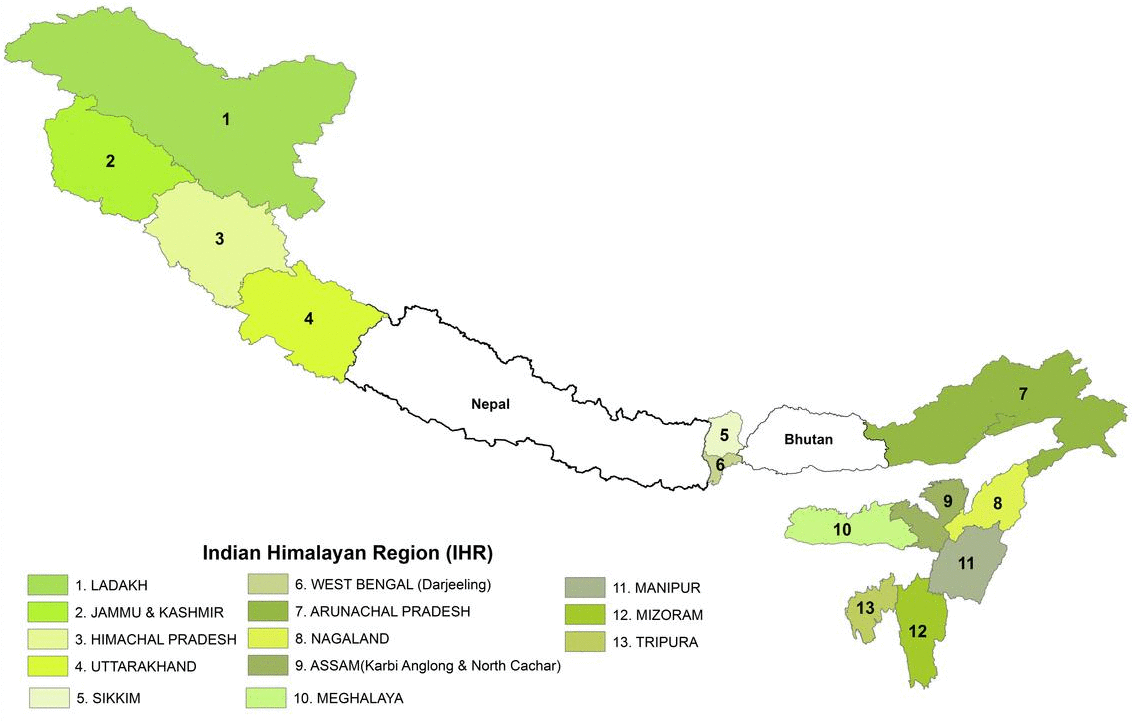Uttarakhand Switch to Hindi
New Himalayan Bat Species Found in Uttarakhand
Why in News?
A recent study by Indian scientists has unveiled a new-to-science bat species, the Himalayan long-tailed myotis (Myotis himalaicus), recorded in Uttarakhand.
- It was previously identified in Pakistan’s Khyber Pakhtunkhwa in 1998.
Key Points
Key Findings and Implications of the Study
- About the Study: Indian scientists documented 29 bat species between 2017 and 2021 during surveys in the Western Himalayas region of Himachal Pradesh and Uttarakhand.
- New Bat Species: The Himalayan long-tailed myotis, found in Uttarakhand’s Kedarnath Wildlife Sanctuary, has been formally described as a new species in the Zootaxa journal.
- This addition brings India’s total bat species count to 135.
- Range Extension of Known Species: The East Asian free-tailed bat (Tadarida insignis), previously mistaken for the European species, has been confirmed in India for the first time.
- This species, extending its range by 2,500 km from China and Taiwan, has now been documented in the Western Himalayas.
- Confirmation of Babu’s Pipistrelle as a Valid Species:
- The study reinstated Babu’s pipistrelle (Pipistrellus babu) as a valid species, separate from Javan pipistrelle (P. javanicus).
- Previously thought to be a synonym due to morphological similarities, Babu’s pipistrelle is now confirmed to be found in Pakistan, India, and Nepal.
- First-Time Records in India:
- The study also provided the first specimen-based confirmation in India for:
- Savi’s pipistrelle (Hypsugo savii)
- Japanese greater horseshoe bat (Rhinolophus nippon)
- The study also provided the first specimen-based confirmation in India for:
- Key Species & Conservation Significance:
- Key species included Blandford’s fruit bat, Japanese and Chinese horseshoe bats, Nepalese whiskered bat, Mandelli’s mouse-eared bat, Kashmir cave myotis, chocolate pipistrelle, and eastern long-winged bat.
- According to the Zoological Survey of India (ZSI), the research will significantly advance the conservation and documentation of India’s small mammal diversity, especially in the ecologically sensitive Himalayan region.
Zoological Survey of India
- ZSI is also a subordinate organization of the MoEFCC and was established in 1916 as a national center for the faunistic survey and exploration of the resources leading to the advancement of knowledge on the exceptionally rich faunal diversity of the country.
- It has its headquarters in Kolkata and 16 regional stations located in different geographic locations of the country.


.png)








.png)


.jpg)



 PCS Parikshan
PCS Parikshan


